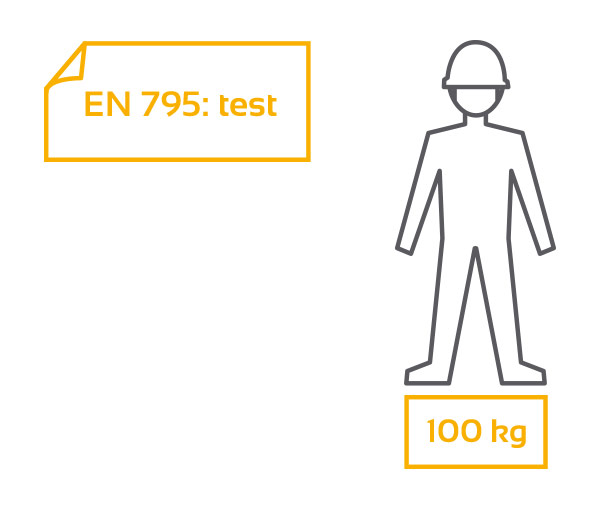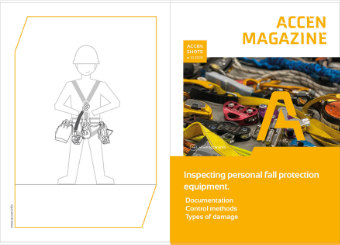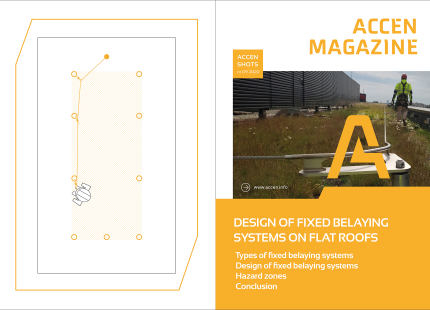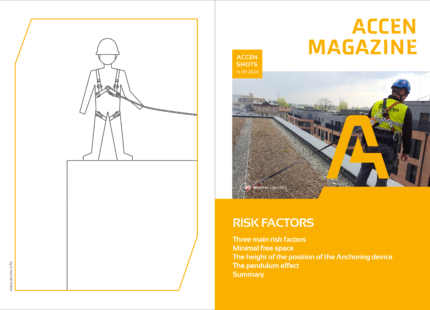
ANCHOR DEVICE
Anchoring devices are an essential part of a properly functioning fall protection system. Such systems consist of three main subsystems such as a safety harness, a connecting or connecting-absorbing subsystem and an anchoring subsystem, the anchor device. It works (anchoring device) directly with the solid structure of the object and contains an anchor point or points for the connection and damping subsystem. Thanks to their design, they facilitate, and often even allow the connection of a protection system to a solid structure. .
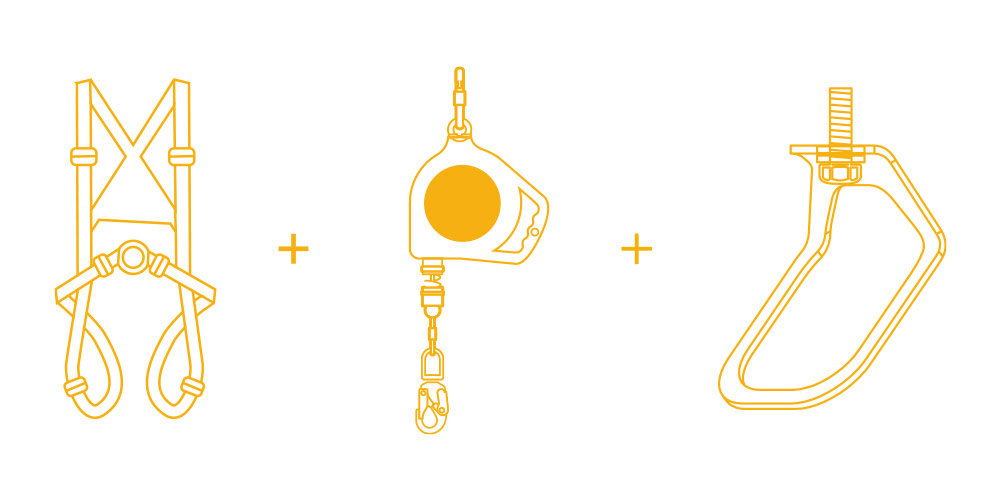
Main subsystems of the fall protection system
Full body harness + Connecting or connecting and damping subsystem + Anchoring subsystem (anchor device)
01. Standards and static strength
Requirements for anchor devices are specified in EN 795:2012, which applies to one user. For anchor devices designed for more than one user, the technical specification CEN/TS 16415:2013 shall also apply.
The basic parameter of any anchoring device intended for one user is its minimum static strength of 12kN, and if it is made of non-metallic materials 18kN. If the anchoring device is dedicated to more than one employee, then 1kN is added for each subsequent person.
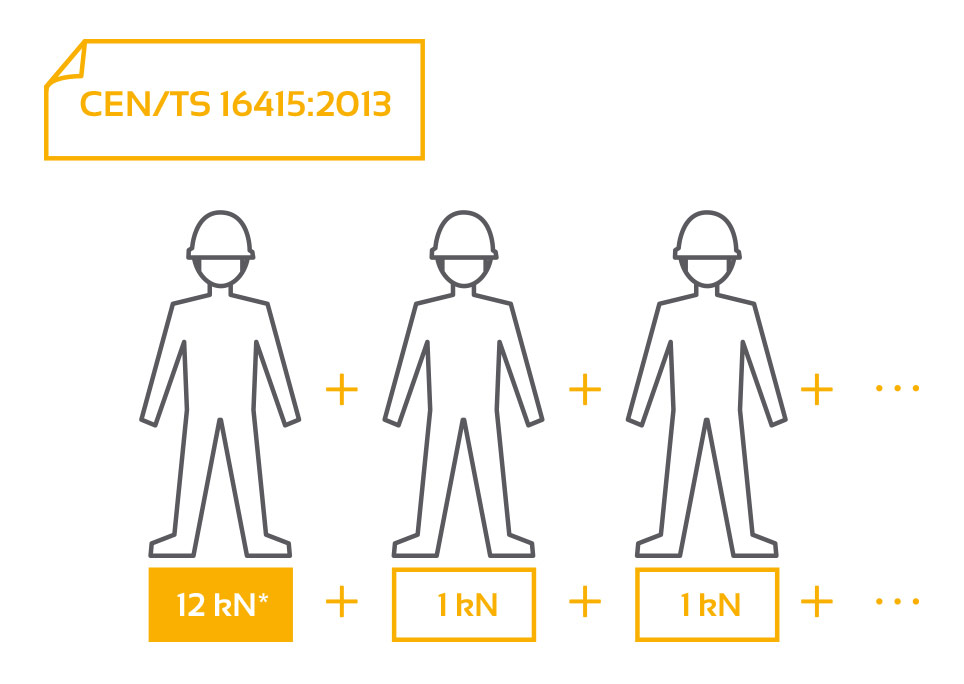
* where the anchoring device is made of metal materials
02. Technical requirements
Anchor devices are also subjected to other tests such as deformation, dynamic force and integrity, as well as corrosion resistance.
No element of the anchoring device may weigh more than 25 kg.
They cannot be used for hanging or transporting loads.
The marking of all devices should comply with the EN 365 standard and include, among others information about the maximum number of users allowed for simultaneous use of the device.
03. Use of anchoring points
Anchoring points are an ideal solution for protecting employees working at heights in places where collective protection measures such as balustrades or safety nets cannot be used. When selecting the anchoring device, it is necessary to take into account not only the parameters of the solid structure with which the device works, but also the scope and manner of necessary movement as well as the type of the connecting (damping and connecting) subsystem that can be used (as per the manufacturer’s instructions) device. Anchoring devices should be installed in such a way and in such places that they do not hinder work at a given position and do not pose additional threats.
04. Classification of anchor devices
Anchor devices are divided into five types: A, B, C, D, E, of which devices of type B and E are classified as personal protective equipment. However, devices of type A, C, D must always be permanently connected with the structure of the object on which they are mounted..
A. Anchor device with one or more fixed anchor points, permanently attached to the structure.
B. Anchor device with one or more fixed anchor points without the need for permanent attachment to the structure.
C. Anchor device using a flexible horizontal rope that cannot be tilted to a level of more than 15° (measured between the end and intermediate anchor at any point along its length)
D. Anchor device using a horizontal rigid rail deviating from the level by no more than 15° (measured between the end and intermediate anchor at any point along its length)
E. Anchor device for use on horizontal surfaces with a maximum deviation of 5° from the horizontal. Its effectiveness depends exclusively on the weight and friction at the contact surface.
Anchor device type A
Made with one or more fixed anchor points, permanently attached to the structure. They exist as system solutions permanently installed in the building structure (e.g. concrete, trapezoidal sheet, OSB, channel plates, sandwich panel, steel, structural wood). They can be mounted as individual devices or as supports for anchor devices of type C and D. They act as a point protection, i.e. they allow for safe movement only to a limited extent. Most often it is the circumference defined by the length of the connection and damping subsystem around such an anchor point.
Anchor device type B
Made with one or more fixed anchor points without the need for permanent attachment to the structure. They are called temporary anchor points due to the possibility of easy and quick assembly and disassembly without interfering with the structure. Portable safety points must be installed in such a way that they cannot be involuntarily unplugged from the connecting and damping subassembly or from the element on which it is mounted. It is important that the places where this type of protection is installed have at least the same strength as the installed anchoring device.
Anchor device type C
Using a flexible horizontal rope that can be tilted to a level of no more than 15° (measured between the end and intermediate anchor at any point along its length). It can be installed on various types of substrates using system brackets. On a guide, usually made of steel wire rope, a movable anchor point can be installed, the so-called belaying trolley. There are single or multi-span solutions with a corner element. Horizontal rope systems allow the employee to move along the path marked by the guide even over long sections, maintaining the continuity of belaying.
Anchor device type D
Using a horizontal rigid guide deviating from the level by no more than 15 ° (measured between the end and intermediate anchor at any point along its length) It can be installed to various substrates using system brackets. A mobile anchor point can be installed on the guide (usually rail). They appear as single or multi-span with a corner element.
The principle of operation of horizontal rail systems is based on a movable anchor point so called belaying trolley that slides along the rigid guide. The mobile anchor point is the place where the connecting and damping subsystem is connected.
Anchor device type E
They are designed for use on horizontal surfaces with a maximum deviation of 5° from the horizontal. They function as inertia mass lying directly on the surface of the roof, and their effectiveness depends solely on the mass and friction at their contact surface. They can have a single anchor point installed or be part of a horizontal guide. Inert anchoring masses can be useful especially if on a flat surface of the workplace at a height there are no elements of the fixed structure to which the connecting and damping subsystem can be connected.The distance of the inert anchoring mass from the edge (danger point) must be at least 2,5 m.



